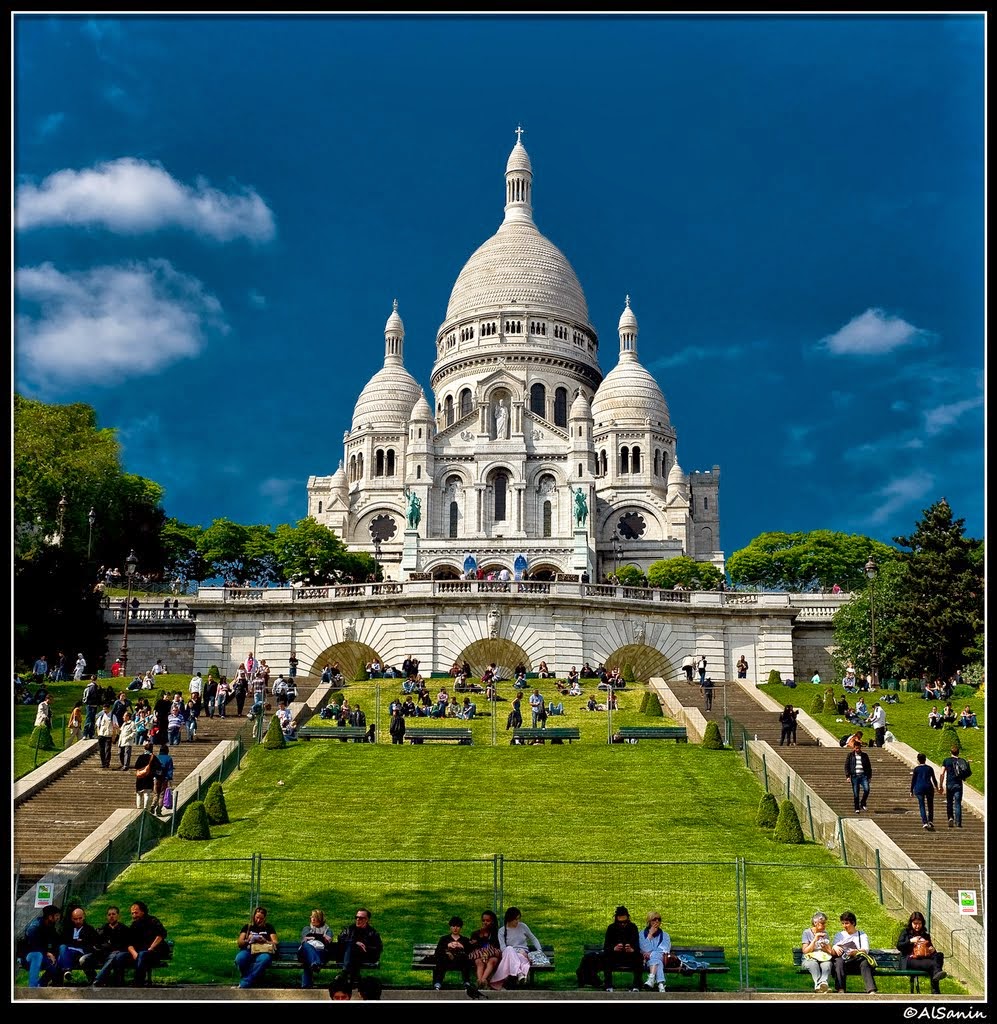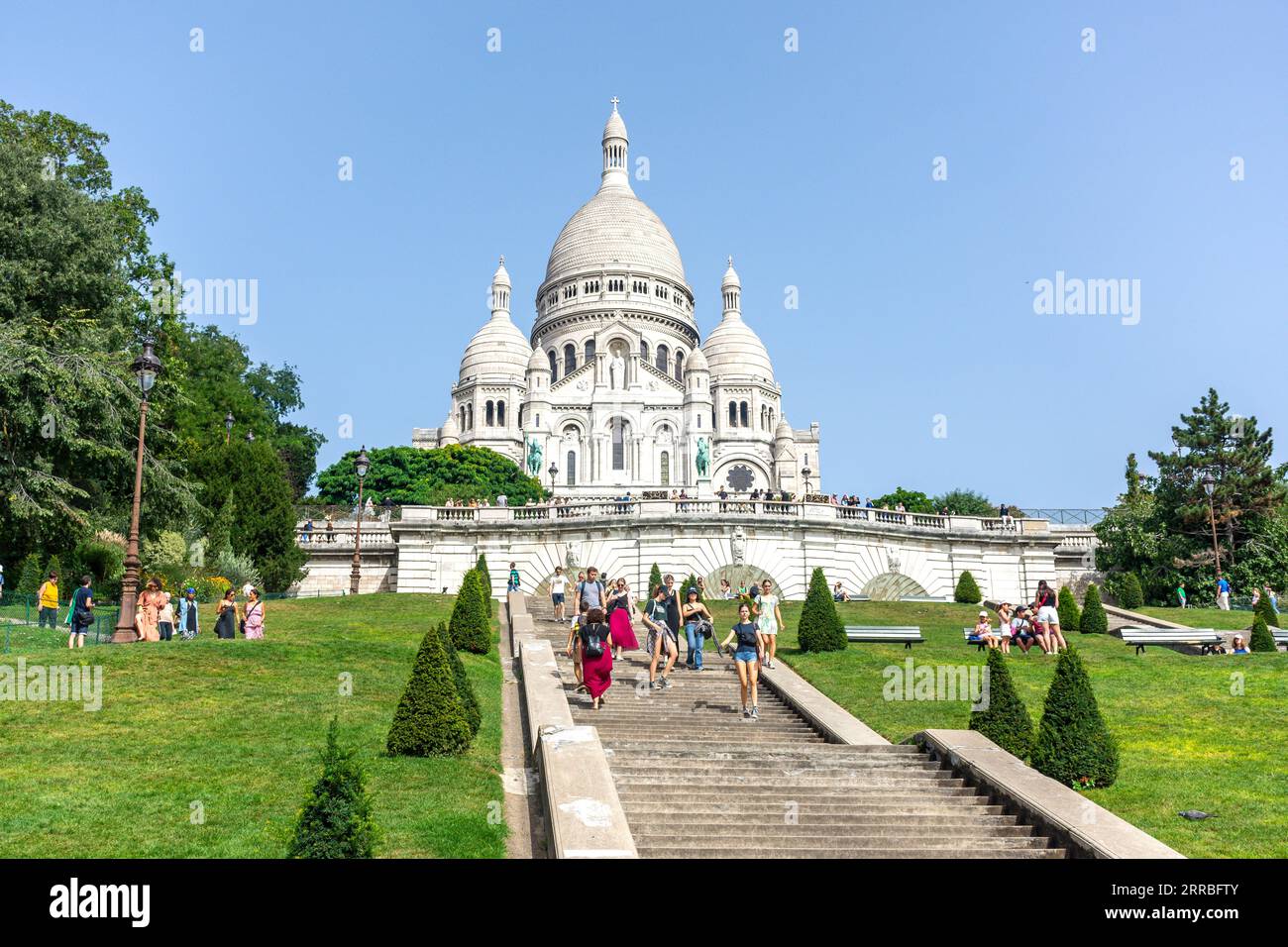Perched atop Montmartre, the highest point in Paris, stands the Basilica of Sacré-Cœur (Sacred Heart). Its gleaming white domes and commanding presence are instantly recognizable, making it one of the city’s most iconic landmarks. But the Sacré-Cœur is far more than just a beautiful building; it’s a testament to French history, faith, and artistic expression. Understanding when and why it was built unlocks a deeper appreciation for this remarkable structure.
The Genesis: A Nation in Crisis
The story of the Sacré-Cœur begins in a period of profound turmoil for France. The Franco-Prussian War of 1870-1871 had been a devastating defeat. The Second Empire of Napoleon III collapsed, replaced by the fragile Third Republic. Paris itself was besieged, enduring months of hardship and culminating in the bloody suppression of the Paris Commune, a revolutionary government that briefly controlled the city.
In the aftermath of these events, many French citizens sought solace and meaning in religion. A sense of national guilt and a desire for atonement for the perceived moral failings that had led to the war fueled a resurgence of Catholic fervor. It was in this context that the idea for the Sacré-Cœur was born.
The Vow and the Vision
The initial impetus for the basilica came from two prominent Frenchmen: Alexandre Legentil and Hubert Rohault de Fleury. They attributed France’s misfortunes to a spiritual decline and proposed building a church dedicated to the Sacred Heart of Jesus as a way to atone for the sins of the nation and invoke divine forgiveness. They made a formal vow to God that if France was spared further calamity, they would dedicate a church to the Sacred Heart.
Their idea gained traction, and in 1873, the National Assembly officially approved the construction of the Sacré-Cœur. The site chosen was Montmartre, a location with significant historical and symbolic weight. Montmartre had been a place of worship since ancient times, and it was also where Saint Denis, the patron saint of Paris, was martyred. Furthermore, it was on Montmartre that the Paris Commune had begun, making it a site associated with both religious devotion and political upheaval.
The Architect and the Design
The task of designing the Sacré-Cœur fell to Paul Abadie, an architect known for his expertise in religious buildings and his interest in Romanesque and Byzantine styles. Abadie’s design was selected from a pool of 78 submissions in a competition. His vision was for a basilica that would be both grand and spiritually uplifting, reflecting the aspirations of a nation seeking renewal.
The Sacré-Cœur’s architectural style is predominantly Romanesque-Byzantine, a blend of elements from both traditions. The basilica is characterized by its:
- White Stone: The exterior is clad in Château-Landon stone, a type of travertine that hardens and self-cleans, ensuring the basilica’s bright white appearance even in the face of pollution.
- Domes: The most prominent features are the four domes, with the central dome reaching a height of 83 meters (272 feet). These domes create a sense of soaring grandeur and spiritual aspiration.
- Plan: The basilica is based on a Greek cross plan, with four equal arms emanating from the central dome. This design symbolizes the universality of the Christian faith.
- Mosaic: The interior is adorned with a vast mosaic, one of the largest in the world, depicting Christ with outstretched arms, symbolizing divine love and compassion.
- Bell Tower: The bell tower houses the "Savoyarde," one of the heaviest bells in the world.
Construction: A Labor of Faith
Construction of the Sacré-Cœur began in 1875 and continued for nearly half a century. The project faced numerous challenges, including:
- Financial Constraints: Funding for the basilica came primarily from private donations, and there were times when money was scarce.
- Geological Instability: Montmartre’s soil was unstable, requiring extensive foundation work to ensure the basilica’s stability.
- Political Opposition: The construction of the Sacré-Cœur was controversial from the outset, with some viewing it as a symbol of religious conservatism and a reminder of France’s defeat in the Franco-Prussian War.
Despite these obstacles, the construction of the Sacré-Cœur proceeded, driven by the dedication of the architects, engineers, and workers, as well as the unwavering faith of its supporters. Abadie himself died in 1884, and the project was continued by other architects, including Honoré Daumet, Jean-Charles Laisné, Henri-Pierre-Marie Rauline, and Lucien Magne.
Completion and Consecration
The Sacré-Cœur was finally completed in 1914, just as World War I was beginning. However, the official consecration of the basilica was delayed until 1919, after the end of the war. The consecration ceremony was a grand affair, attended by dignitaries from across France and the world.
The Sacré-Cœur Today: A Place of Pilgrimage and Reflection
Today, the Sacré-Cœur Basilica remains a place of pilgrimage and worship, as well as a major tourist attraction. Millions of visitors come each year to admire its architecture, experience its spiritual atmosphere, and enjoy the panoramic views of Paris from the top of Montmartre.
The Sacré-Cœur is not without its controversies. Its association with the conservative elements of French society and its construction in the wake of the Paris Commune continue to be debated. However, there is no denying its significance as a landmark, a work of art, and a symbol of France’s complex history.
In conclusion: The Basilica of Sacré-Cœur stands as a testament to a nation’s search for redemption and renewal. Its construction, spanning nearly five decades, reflects the political, social, and religious currents of late 19th-century France. It remains a powerful symbol of Paris, a place where faith, art, and history converge. The Sacré-Cœur is a place for spiritual reflection, and a place to appreciate the city of Paris.


